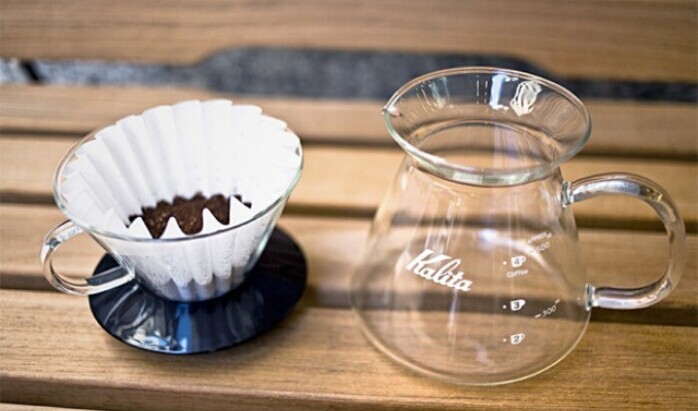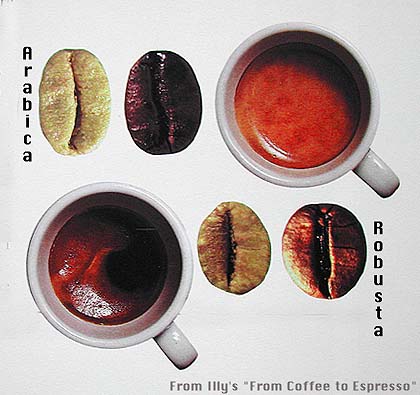Correctly tasting coffee coffee cafe drinking coffee "cup test" Cupping boutique coffee
The first thing to make clear is that we are more or less able to distinguish the subtleties of coffee: for example, this cup of coffee in hand, um, very fragrant, not overly irritating acid, a bit similar. Grapefruit, shredding will have a sweet feeling and so on. In most cases, we don't need to be trained, and we all know whether we like it or whether it has a particularly unpleasant smell. Drinking coffee is not an art understood by an elegant or powerful person. Drinking coffee is the same as looking for delicious food in the alley everywhere. There is no need for a swarm and a swollen face and fat people. Like it? Or don't like it? Like all experience, drinking too much also has a chance to become an expert. Before we really understand the complex flavor of coffee, we first understand how people feel about coffee.
Feeling is part of the nervous system of the human body. Any sensation consists of peripheral sensory receptors (accepting external changes), afferent nerves (transmitting changes) and central nerves (interpreting changes and further responding). When we feel food, it is the result of smell and taste accepting the chemical changes of the outside world. When specific molecules in food stimulate the peripheral receptors (for example, the receptors on olfactory bulb cells pick up taste molecules (tastant), while the receptors on taste cells receive stimulation of odor molecules (odorant), chemical stimulation and coupling will trigger ion channels and intracellular signaling systems, resulting in changes in membrane potential, which are transmitted to the central nervous system by olfactory and glossopharyngeal nerves. It is received by the cerebral cortex and connected with the memory system to determine the follow-up response.
In terms of taste, most physiology textbooks recognize that human beings have the perception to recognize the following four flavors: sweet, salty, sour and bitter. In addition, there is a sense of taste that recognizes specific amino acids, including proline, which is closely related to meat protein, which is called "fresh" (Savory in English, Umami in Japanese, and monosodium glutamate familiar to the Chinese provides this taste seasoning). These flavors can be found in all foods, and coffee is no exception. These five tastes are the basis of coffee's complex taste.
The receptors and ion channels on the taste cell determine the specific molecules that the cell receives. For example, sweetness is recognized by a receptor called G-protein, while salty taste is identified by sodium channels on the cell membrane. The discovery of molecular biology and proteosome in recent years has not only made the mechanism and transmission route of each flavor clearer, but also opened up a new field of vision for taste. In the past, it was thought that there was a so-called "taste zone" on the tongue, and it was believed that the front and back sides of the tongue recognized different tastes. The current tone is that each taste bud cell is composed of a variety of taste cells, each taste cell detects the corresponding taste molecules, and each taste cell only shows the same type of receptor. Therefore, all the taste buds on the tongue can feel sweet, salty, sour, bitter, fresh and so on. Since most of the food we come into contact with has more than one taste and can stimulate several taste receptors at the same time, if olfactory and warm stimuli are added, the matter of "tasting" alone is very complicated.
In the case of smell, the connection between smell and memory is closer. Different odor molecules stimulate different olfactory cells to respond and transmit the smell message to the olfactory bulb, which is then transmitted to the brain through the olfactory nerve. As the olfactory bulb is quite close to the limbic system of the supervisor's long-term memory and emotion, the analyzed message is sent back to the limbic system synchronously, connecting with past experience and reactions. This is why the fragrance of flowers can be recognized when tasting specific African beans, and it can be further pointed out that it is jasmine.
In the final analysis, the so-called tasting is actually a very complex physiological process, and the food flavor we perceive is the product of the integration of multiple senses in the brain. It is not only Pingchang's perception of the present, past experience and memory, but also our perception of food flavor. At the same time, it will be deepened and revised with the number of experiences and feedback, affecting our final perception. In fact, the experience method (also known as "cup test" Cupping), which is talked about by people in the field of coffee, describes perception in a systematic and specific way, and connects it with experience, so that abstract taste experience can be traced back and recorded.

Important Notice :
前街咖啡 FrontStreet Coffee has moved to new addredd:
FrontStreet Coffee Address: 315,Donghua East Road,GuangZhou
Tel:020 38364473
- Prev

Relationship between grinding, extraction rate and concentration the best extraction rate and concentration of black coffee
Coffee extraction is like doing an experiment, controlling the change between solvent (water) and solute (coffee) under environmental variables. How to dissolve the effective substances in coffee according to demand under appropriate conditions is the tireless experimental theme of all coffee lovers. Shotsmrkt. In the name of "coffee addiction", we will regularly sort out the experience and imagination of coffee brewing. Make a good cup of coffee
- Next

Use a siphon pot to make delicious coffee Japanese coffee siphon single Japanese coffee utensils
(1) Caramelization: the sugar in coffee beans is caramelized at about 170-200 ℃, which is exactly the melting point of sucrose (185 ℃) and the temperature of the explosion stage when coffee beans are roasted. The product of caramelization is divided into two parts: 1. The dehydration product of sugar is caramel or sauce 2. The pyrolysis products are mainly volatile aldehydes and ketones. In general, in the caramelization reaction
Related
- Beginners will see the "Coffee pull flower" guide!
- What is the difference between ice blog purified milk and ordinary milk coffee?
- Why is the Philippines the largest producer of crops in Liberia?
- For coffee extraction, should the fine powder be retained?
- How does extracted espresso fill pressed powder? How much strength does it take to press the powder?
- How to make jasmine cold extract coffee? Is the jasmine + latte good?
- Will this little toy really make the coffee taste better? How does Lily Drip affect coffee extraction?
- Will the action of slapping the filter cup also affect coffee extraction?
- What's the difference between powder-to-water ratio and powder-to-liquid ratio?
- What is the Ethiopian local species? What does it have to do with Heirloom native species?

